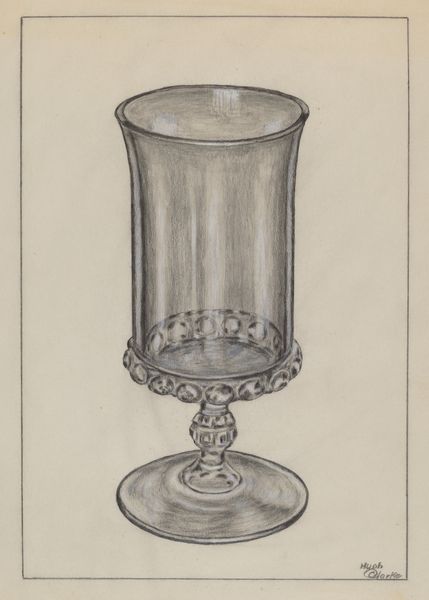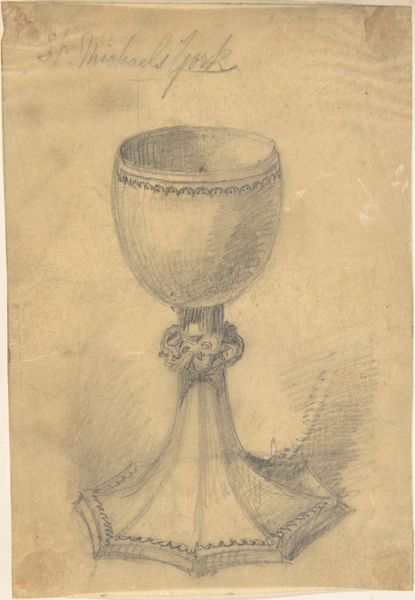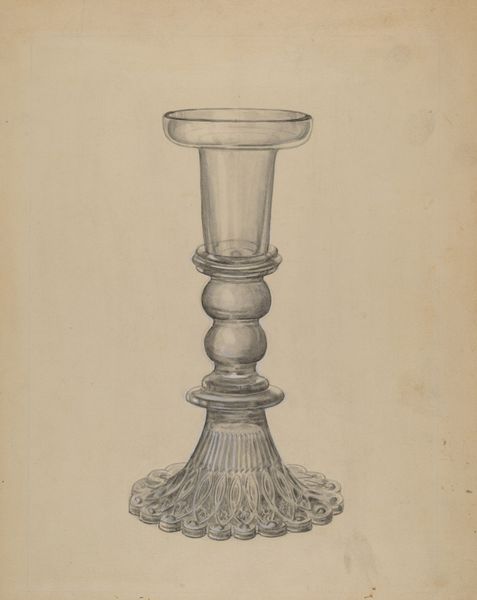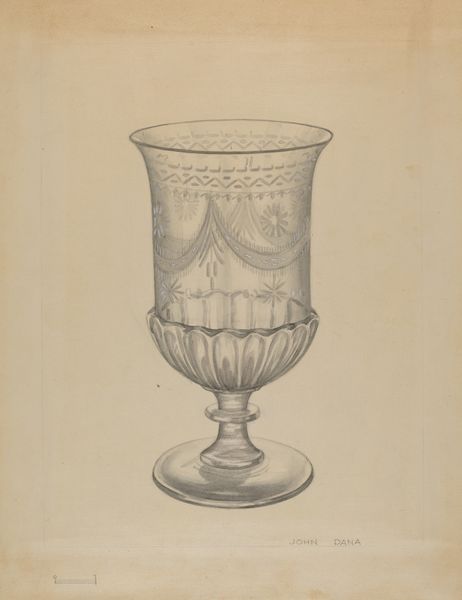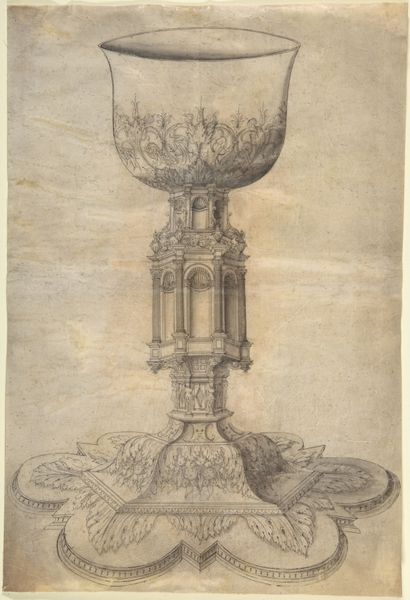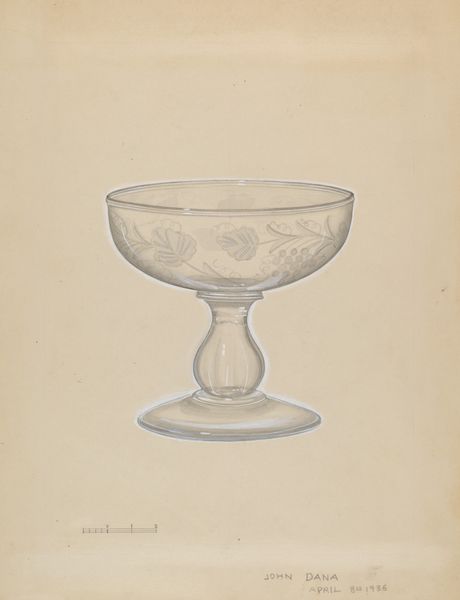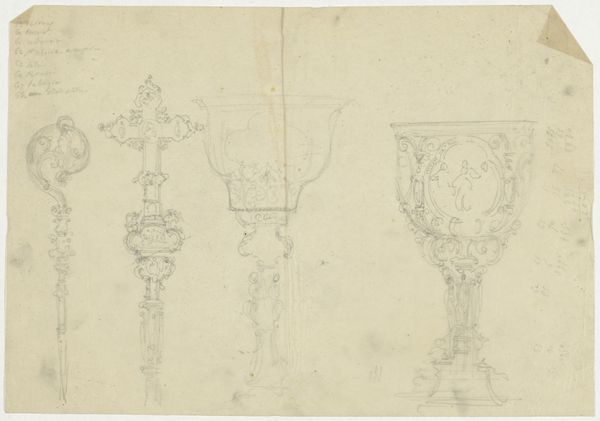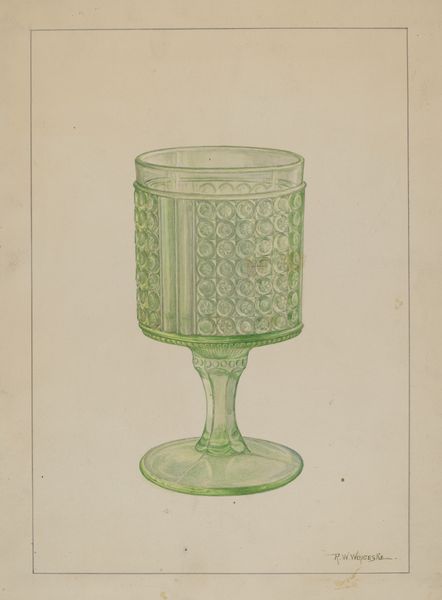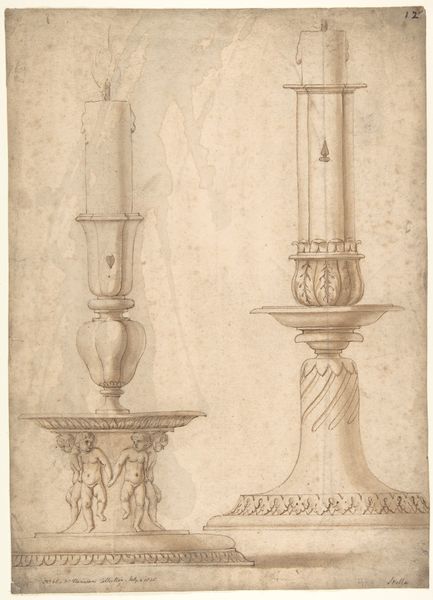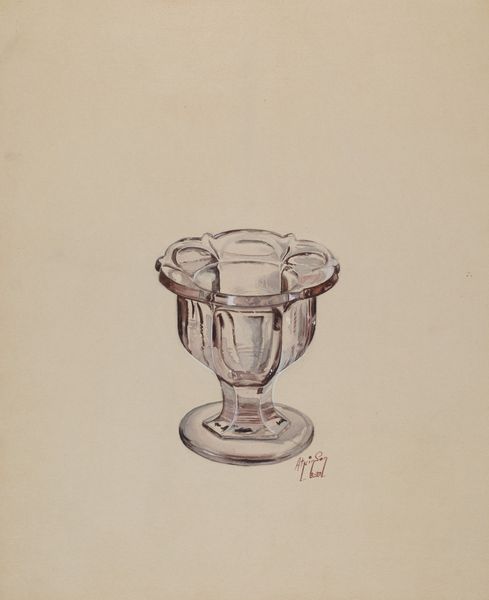
Et alterbæger og en monstrans, tegnet efter arbejder i Nationalmuseet 1840s
0:00
0:00
drawing, pencil
#
drawing
#
pencil
#
academic-art
#
realism
Dimensions: 203 mm (height) x 155 mm (width) (bladmaal)
Editor: This drawing from the 1840s by Dankvart Dreyer, titled "Et alterbæger og en monstrans, tegnet efter arbejder i Nationalmuseet," depicts a chalice and a monstrance using pencil. It has a subdued feel, almost reverential in its quiet precision. What do you see in this piece, beyond the surface representation? Curator: Beyond the literal depiction, I see a subtle commentary on power structures within 19th-century Danish society. Consider the role of the church and its relationship to national identity at this time. Dreyer's choice to meticulously render these religious objects, sourced from the National Museum, speaks to the intertwined nature of religious authority and nascent nationalistic sentiment. Editor: That's interesting. So, you're saying the drawing is not just about the objects themselves, but about what they represent culturally? Curator: Precisely. Think about the labor and resources invested in creating and preserving such objects. Who benefited from their existence? Whose stories are told – or silenced – by their display in the National Museum? And whose gaze is privileged when viewing them, even in drawing? Consider the drawing’s style too: academic and realistic. Who decides the aesthetic values of academic art? Editor: It reframes my perspective on it entirely. It seemed so simple before. Curator: The artist prompts us to consider the intersections of faith, nationhood, and representation through a critical lens, urging us to ask uncomfortable questions about history and privilege. Editor: Thank you. I initially overlooked those broader cultural contexts. This has shown me a lot more depth. Curator: Absolutely. Art holds endless possibilities, inviting us to unpick intricate social threads one pencil stroke at a time.
Comments
No comments
Be the first to comment and join the conversation on the ultimate creative platform.
